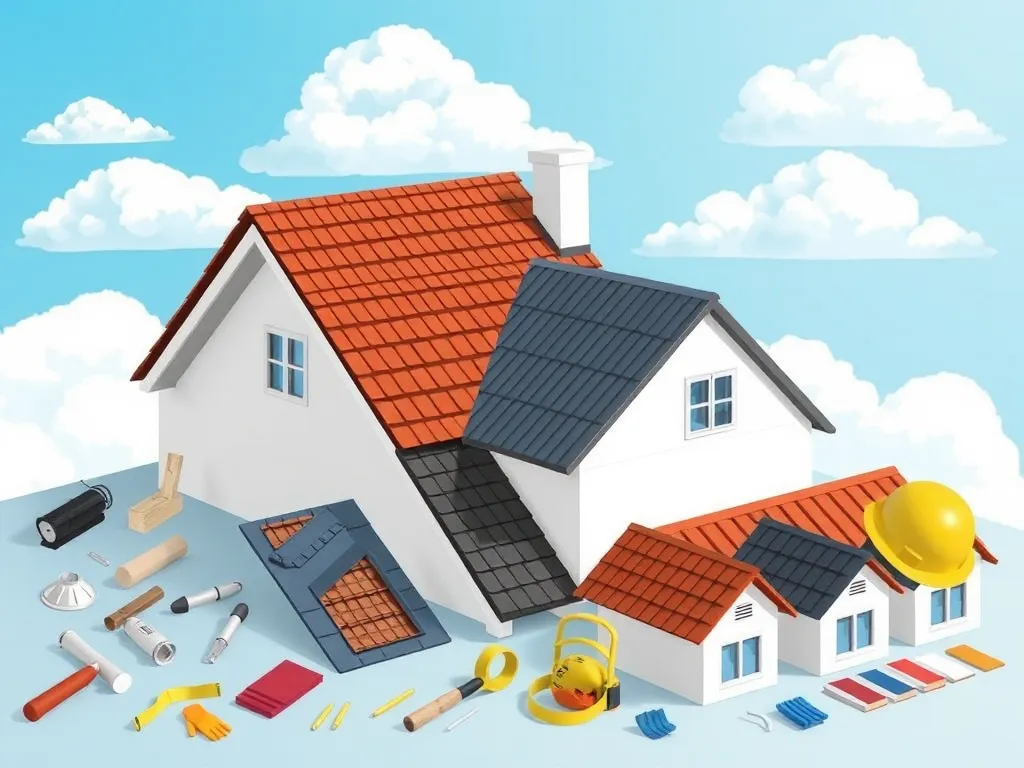Essential Guide to Roof Replacement: Key Considerations

Understanding Roof Replacement: Essential Guide for Homeowners
Roof Replacement is a crucial home improvement task that protects your investment, enhances energy efficiency, and contributes to your home’s aesthetic appeal. When the time comes for a roof replacement, it’s essential to understand the process, materials available, and signs indicating that your roof may need replacing.
Businesses in need of reliable solutions should consider commercial roofing & replacements in beaconsfield for enduring quality.
The roof of your home is not only a protective barrier against the elements but also plays a significant role in maintaining your home's structural integrity. Roof Replacement ensures that any worn-out, damaged, or ineffective roofing material is replaced with high-quality alternatives that can last for decades. This process not only safeguards your household but also boosts the overall market value of your property.
Deciding when to replace your roof can be challenging, as it requires careful inspection and knowledge of various signs that indicate the need for replacement. By identifying issues early on, homeowners can avoid more extensive damage and higher repair costs down the line. A proactive approach to Roof Replacement can save homeowners time, money, and stress.
Choosing the right materials for your roof replacement is another critical aspect, as different materials have different lifespans, costs, and maintenance requirements. With various options available, it’s essential for homeowners to do their research and consult professionals to make the best choice for their specific needs and budget.
In this article, we will explore the types of roof replacement materials, signs that indicate you need a roof replacement, the process and timeline for replacement, the cost factors involved, and the benefits of regular roof maintenance.
Types of Roof Replacement Materials
One of the most popular choices for Roof Replacement is asphalt shingles. They are known for their impressive durability, affordability, and ease of installation. Asphalt shingles come in various colors and textures, allowing homeowners to choose a style that complements their home. However, they typically last around 15 to 30 years, depending on quality and maintenance.
Metal roofing is another outstanding option, known for its exceptional longevity and efficiency. Metal roofs can last 40 to 70 years and reflect solar radiant heat, which can reduce cooling costs significantly in warmer climates. However, the initial investment can be higher compared to other materials, so it’s essential to weigh costs against long-term benefits.
Tile roofing, commonly made from clay or concrete, adds aesthetic appeal and is highly durable. These roofs can last up to 100 years but can be heavy, necessitating proper structural support. They also require professional installation, which can increase the overall cost of roof replacement.
For top-notch services, trust the experts for roof repairs berwick and restore your home's protection.
Slate roofing is known for its elegance and unparalleled durability. However, it can be expensive and challenging to install, with a lifespan of over 100 years. Potential drawbacks include its weight and the need for specialized installation, making it essential for homeowners to consider their options carefully.
Wood shakes offer a natural look that many homeowners desire, providing excellent insulation properties. However, they require regular maintenance and are susceptible to rot and insect damage. Homeowners must commit to upkeep to ensure their wooden roofs remain in good condition.
Signs You Need a Roof Replacement
One of the primary indicators that you may need a Roof Replacement is curling or missing shingles. Shingles that are curling or absent not only compromise the roof's aesthetics but also its efficiency, allowing water to penetrate and causing further damage.
Leaking ceilings are another critical sign of roof failure. If you notice water stains on your ceiling or walls, it’s essential to investigate further, as these leaks can lead to significant structural issues if not addressed promptly.
Excessive granule loss from shingles is another warning sign that your roof may need replacing. Granules protect the shingles from UV rays, and significant loss can indicate deterioration, which compromises the roof's ability to protect your home.
A sagging roof is a concerning sign that may indicate structural issues. If you notice any visible sagging, it's crucial to consult with a professional immediately to assess the situation and determine whether a roof replacement is necessary.
Moss or algae growth can also be indicators of underlying moisture problems. If you notice growth on your roof, it’s crucial to assess your ventilation and drainage systems, as these issues can lead to further damage and the potential need for replacement.
Roof Replacement Process & Timeline
The Roof Replacement process typically begins with an initial inspection. This step is crucial for determining the extent of the damage and understanding what issues need to be addressed. A professional roofer will assess the roof's condition and may recommend a full replacement depending on the findings.
Choosing the right contractor is vital in the roof replacement process. Homeowners should conduct thorough research, read reviews, and verify credentials before selecting a contractor. Ensuring that your chosen contractor is licensed and insured will protect you in case of any accidents during the work.
Material delivery is the next stage, where all the required roofing materials are brought to your home. Homeowners should ensure that their property has a clear and safe path for delivery to guarantee timely and efficient installation.
The installation stages consist of several steps, including removing old materials, repairing underlying structures, and installing the new roof. Each contractor may have a unique process, but having a detailed plan will help ensure that the project runs smoothly.
Finally, a thorough inspection and clean-up will take place after installation. The contractor should provide a final check to ensure quality and proper functioning of all components, leaving the site clean and safe for homeowners.
Cost Factors in Roof Replacement
Material costs are one of the primary factors influencing Roof Replacement prices. Different materials come with varying price points, so understanding the market prices for your desired materials is essential when budgeting for your replacement.
Labor costs also play a significant role in determining the overall cost of roof replacement. Depending on the complexity of the project and the contractor's experience, labor costs can vary, so homeowners should request detailed estimates to plan their budgets.
The size of the roof is another key consideration when budgeting for Roof Replacement. The larger the roof, the more materials and labor are required, leading to higher overall costs. It’s important to measure your roof accurately to avoid any surprises.
Geographic location can influence the cost of Roof Replacement as well. Regional price variations can affect labor and material costs, so homeowners should compare quotes from various contractors in their area.
Lastly, additional features such as gutters, vents, and insulation can add to the overall cost of roof replacement. Homeowners should consider these factors in their budget to ensure comprehensive coverage during the replacement process.
Benefits of Regular Roof Maintenance
Regular roof maintenance helps extend the lifespan of your roofing system. Proactive upkeep can prevent minor issues from becoming significant problems that require a full roof replacement, allowing homeowners to maximize their investment.
Identifying problems early through regular inspections can save homeowners time and money. Catching issues before they escalate can help avoid the need for extensive repairs or even a complete roof replacement.
Regular maintenance can improve energy efficiency by ensuring your roof is in optimal condition. Properly maintained insulation can help keep your energy bills low, providing a return on investment for regular upkeep.
Additionally, maintaining your roof enhances your home’s curb appeal. A well-kept roof reflects positively on the overall look of your property, which can be particularly beneficial when considering selling your home in the future.
Lastly, regular roof maintenance can prevent costly repairs down the road. By staying on top of minor repairs and maintenance tasks, homeowners can prevent bigger issues, ultimately saving money and stress.
